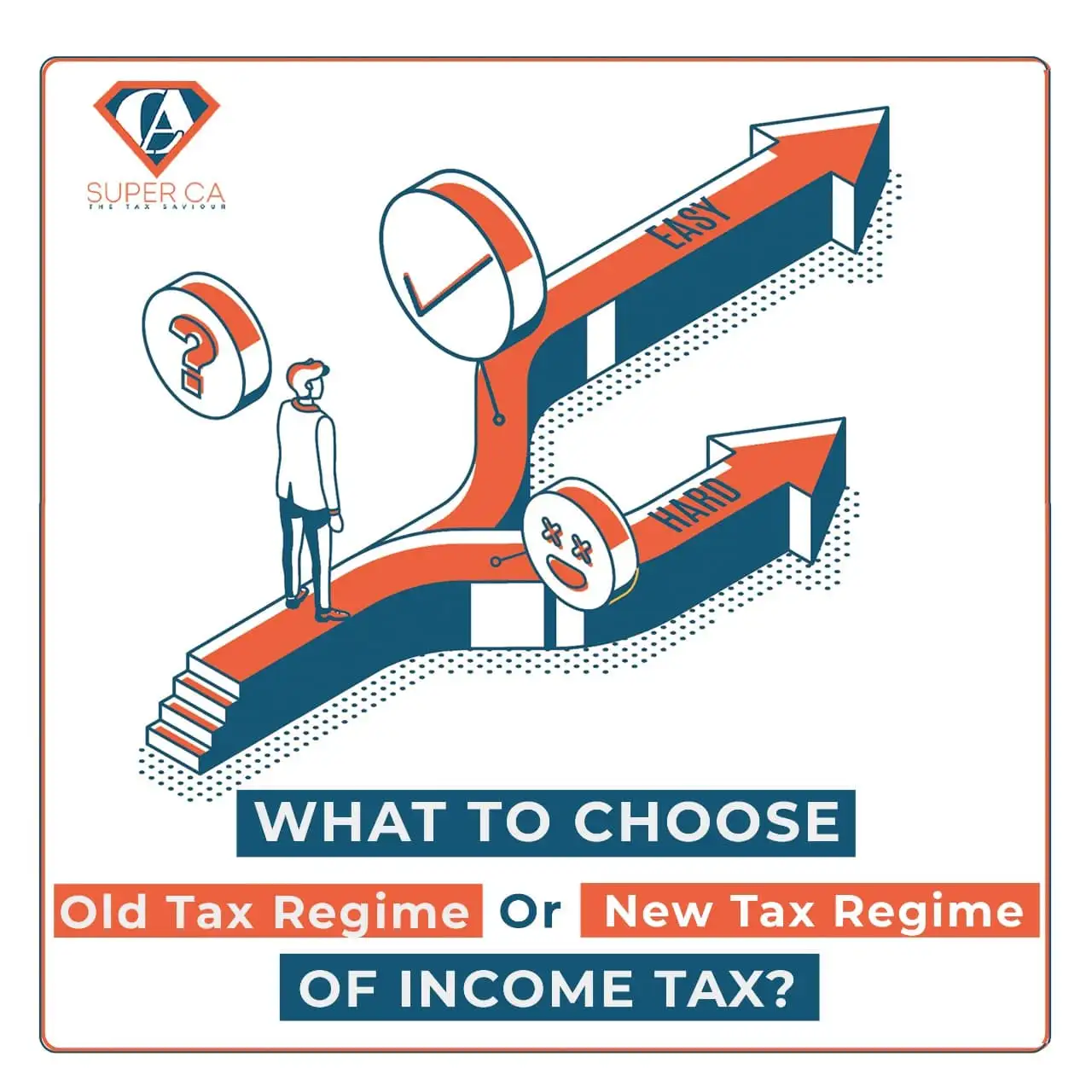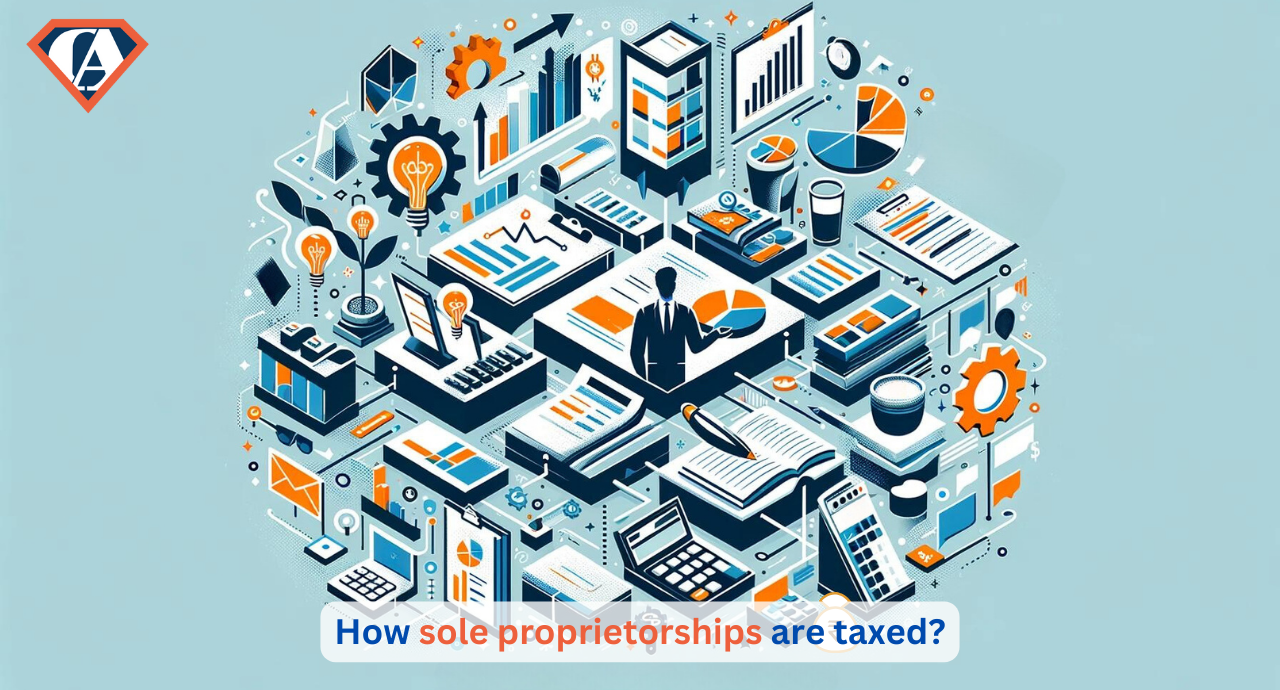What should a taxpayer choose – Old or New regime of income tax?
- Posted By SuperCA
- On 03 December

Introduction
Albert Einstein rightly stated Income Tax as the hardest thing in the world. Well, he saw the future and is certainly right in predicting the same. While paying tax we are occupied with many questions regarding its filing, returns, and applicability under the laws. The understanding is very less at times. The budget passed in 2020 introduced a new tax regime all together with new tax slabs and implementation of lower tax rates. All the available deductions and exemptions were removed. A taxpayer can choose the new tax regime from the financial year 2020-2021.
Hon’ble Finance Minister Nirmala Sitharaman proposed to bring new tax slab rates for Individual Taxpayers wherein Income tax rates were reduced for Individuals and Hindu Undivided Family (HUF) earning income upto 15 lakhs. The confusion began when it was given a choice between the old regime and the new regime. The option created complexity instead of making it simpler. The middle-class people were benefited from this new tax regime in the following ways.
New Regime- Tax Rates and Tax Slabs
The new and old tax rates applicable to the annual income are as below-
Annual Income –
• Up to Rs. 2.5 lakhs – Old Tax Rate [Nil], New Tax Rate [Nil]
• Rs. 2.5 lakhs to Rs. 5 lakhs- Old Tax Rate [5%], New Tax Rate [5%]
• Rs. 5 lakhs to Rs. 7.5 lakhs- Old Tax Rate [20%], New Tax Rate [10%]
• Rs. 7.5 lakhs to Rs. 10 lakhs- Old Tax Rate [20%], New Tax Rate [15%]
• Rs. 10 lakhs to Rs. 12.5 lakhs- Old Tax Rate [30%], New Tax Rate [20%]
• Rs. 12.5 lakhs to Rs. 15 lakhs- Old Tax Rate [30%], New Tax Rate [25%]
• Rs. 15 lakhs and above- Old Tax Rate [30%], New Tax Rate [30%]
The new rates mentioned above are without any deductions under different Sections of Chapter VI-A. If a taxpayer claims a deduction of Rs. 2.5 lakhs, standard deduction of Rs. 50, 000 Rs. 1.5 lakhs under Section 80 C and investment in NPS of Rs. 50,000, the tax rate will remain the same as the old one.
The Motive to Introduce New Tax Regime
The motive of the government to introduce a new tax regime was to simplify the tax system by removing various deductions and exemptions and lowering the tax rates. Tax returns were scheduled in an easier way for taxpayers who opted for the new tax regime.
Exemption and Deduction under the Old Tax Regime and New Tax Regime
Under Old Tax Regime Exemptions permitted–
• Standard Deduction;
• Housing loan interest;
• Medical Insurance premium;
• House Rent Allowances;
• Leave travel allowances;
• Education Loan interest;
• Saving bank interest;
• Section 80 C investments.
Under New Tax Regime Exemptions and Deductions not permitted-
• House rent allowance depending on salary and rent paid;
• Investment under Section 80C : Rs. 1.5 lakhs;
• Standard Deduction : Rs. 50, 000;
• Housing Loan interest : Rs. 3.5 lakhs for affordable housing and Rs. 2 lakhs for others;
• NPS Contribution : Rs. 50, 000;
• Medical Insurance premium: Rs. 25,000 and Rs. 50,000 for old parents and senior citizens;
• Leave travel allowance : Tax-free when claimed once in two years;
• Saving bank interest : Under Section 80TTA – Rs. 10, 000;
• Disability of self or dependant ; Rs. 75,000 to Rs. 1.25 lakh;
• Education loan interest paid for eight consecutive years;
• Income of senior citizens Rs. 50, 000 under Section 80 TTB;
• Donations – 50% to 100 % of the amount donated;
• Treatment by a self or dependant person for a specific disease Rs. 40, 000 and Rs. 1 lakh for senior citizens;
50 Tax Exemptions those were untouched in the budget 2020-
• VRS proceeds
• Agricultural Income;
• Standard deduction on rent;
• Income from Life Insurance;
• Retrenchment Compensation;
• Leave encashment on retirement;
Status of the New Tax Regime
• Any Individual and Hindu Undivided Families have the freedom to opt for a new tax regime according to their choice. It is completely their choice.
• The Lower tax rates allowed under the new regime is applicable to those who are willing to give up an exemption and deductions allowed under the provisions of the Income tax Act, 1961.
• Deduction under Section 80CCD relating to employer’s contribution on account of an employee in a pension scheme can be claimed.
Conditions to avail New Tax Regime
• The New Tax Regime is completely optional. It is an individual’s discretion to choose between the old and new tax regime.
• A taxpayer earning income from the business has opted for the new regime for any year and withdraws it in any subsequent years, cannot opt for the new regime again and has to follow the old regime. Other taxpayers however can choose between the regimes every year.
• Every employer needs to obtain a declaration from employees via CBDT circular issues on April 13, 2020 to opt for the new tax regime. Before filing returns an employee gets the right to choose between tax regimes.
• Individuals opting for the new regime needs to forego exemptions and deductions available with the old regime.
How to choose between the two regimes? (Whether to file in old or new tax regime)
Various factors will play a role in making the choice such as – Current Income, Source of income, Investments, Savings etc. In order to decide the benefits under a particular regime one needs to work out their tax liability. The Income tax department has introduced an easy way to calculate tax which would help in deciding the regime via the online portal -https://www.incometaxindiaefiling.gov.in/Tax_Calculator/ this portal would help to have a basis about the outflow of tax.
Examples in which regime higher tax has to be paid:-
In detail-
• Income Tax for Rs. 6 lakh Annual Income- On calculation it is concluded that anyone with Rs 6 lakh annual income has to pay Rs 23,400 as tax subtracting exemptions and deductions as per the New Tax Regime. But under the Old Tax Regime the tax to be paid for Rs 6 lakh annual salary was Rs 33,800.Thus, amounting to total tax benefit as per the New Tax Regime to be Rs.10, 400.
• Income Tax for Rs. 8 lakh Annual Income- Under the New Tax Regime tax calculated to be paid for the particular salary is Rs. 75, 400. As per the Old Tax Regime without exemptions and deductions the tax required to be paid was Rs. 46, 800. Thus, the total tax benefit under New Tax Regime would be Rs.28, 600.
• Income Tax for Rs 10 lakh Annual Income- Without Exemptions and Deductions a taxpayer under the New Tax Regime has to pay Rs 78,000 as tax. The same taxpayer had to pay Rs. 1, 17,000 under the Old Tax regime subtracting the exemptions and deductions. The total benefit as per the New Tax Regime would amount to Rs 39,000.
• Income Tax for Rs 12 lakh Annual Income- The tax amounts to Rs. 1,19,600 without exemptions/deductions by the tax calculation under the New Tax Regime. Whereas under the Old Tax Regime it would amount to Rs. 1,79,400 without exemptions/deductions. The total benefit as per the New Tax regime would be Rs. 59, 800.
Pros and Cons are to be determined while choosing a particular regime.
Pros of Old Tax Regime-
1. Encourage Savings;
2. Store investments as a source of Passive income;
3. Inflation can be beaten through investments;
Cons of Old Tax Regime-
1. Lower disposable income.
2. Limited choices to save investments;
3. Proofs of deductions;
Pros of New Tax Regime-
1. Reduce tax rates;
2. Reduce compliances;
3. Great disposable incomes;
4. Increased liquidity;
5. Flexibility in an investment portfolio;
Cons of New Tax Regime-
1. Non- availability of tax deductions;
2. Reduced flexibility for those who to chose a new regime who have business income;
3. Absence of saving opportunities;
Conclusion-
To choose a regime a taxpayer needs to make a careful analysis and comparison of tax outgo and other factors. Business or professional income needs extra care as they are restricted to enter into the new regime again once they are opt out from choosing one of them.
Anyone looking for a flexible investing structure should opt for the new tax regime. Whichever regime seems to be flexible and beneficial should be adopted except for those who have income from business or profession. Individuals with business or profession cannot switch between the two regimes every year. If either one of them opts for a new tax regime they will only get one chance in their lifetime to go back to the old regime. They can only bounce back to the new regime only if their business income ceases to exist.
The new tax regime would be offering a low tax rate but all the benefits given under the old regime regarding exemptions and deductions are not awarded or promised by the new tax regime. It is thus clear that changes introduced don’t really make things easier one way or the other. A New tax regime will do goof to someone intending to invest money in any tax savings plan. Whereas the full package involving wealth creation through investments in tax saving instruments, health insurance, education loans and EMI related to it, home loans etc is dedicated in a better way in the older regime.
The person should choose the option which will help them to save tax. The New Tax regime aims directly at removing several deductions and exemptions. It is also clear how a taxpayer would benefit when there is an exclusion of deductions and exemptions once they opt for the New Tax Regime.





